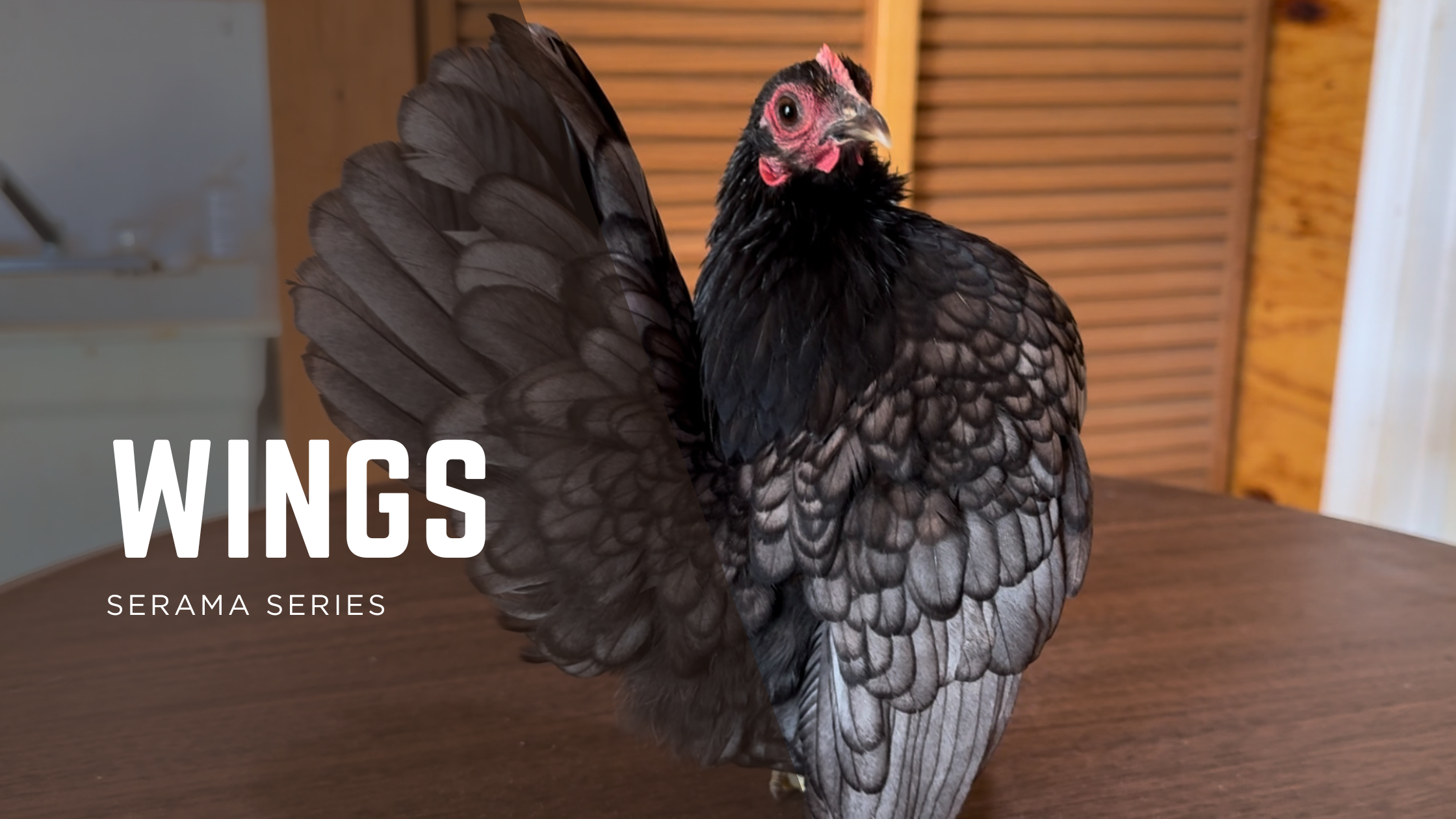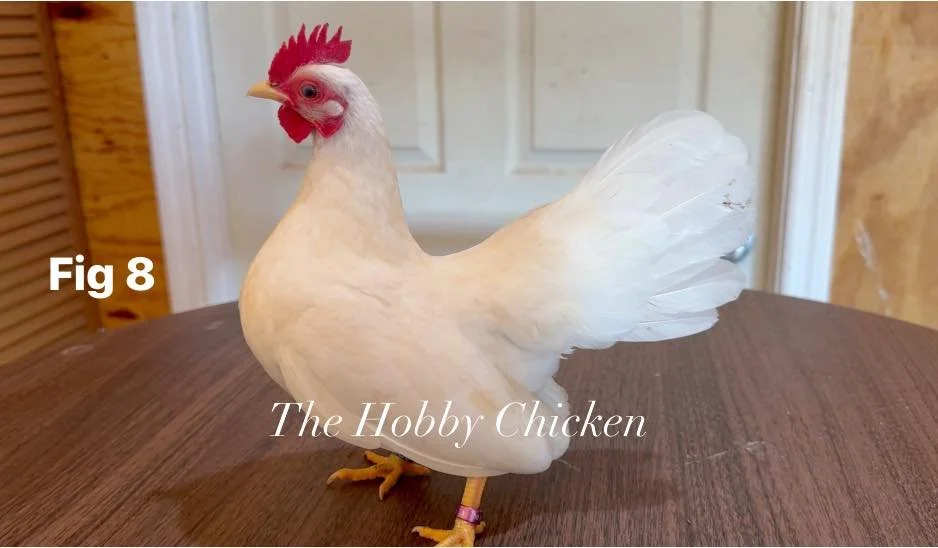Serama Series 3 - Wings
In this installment of our Serama series, we’re going to discuss wings and wing carriage. Serama are one of the few breeds required to carry their wings in a completely vertical manner. Most other breeds hold their wings in a more horizontal fashion, or close to it.
First and foremost, the standard calls for the wing, eye, and leg to fall on the same vertical line. In other words, if you were to draw a line from the top of the bird straight down through the eye, it should also run through the wing and leg. Be aware that some American and Traditional Serama carry their wings too far forward. If the wing is placed ahead of the leg, they can be docked points. While this forward placement is a desirable trait in the Ayam (which we’ll cover later in the series), it is not correct for the Traditional or American Serama.
Secondly, the wings of a Traditional or American Serama should nearly touch the ground. A good landmark is that the wing should be long enough to reach the outside toe, but not so long that it drags the ground when the bird is in pose. Keep in mind that when a male courts a female, he will drag his wings across the ground during his dance. That does not count as being “too long.”
A fault that can occur in Serama is scissor wing. It’s important to distinguish between “scissor wing” and “split wing.” Split wing occurs when a feather is missing as it didn’t develop, leaving a gap between the primary and secondary feathers. Scissor wing, on the other hand, happens when the primary feathers angle too far back, sticking out behind the secondaries.
There are two schools of thought about scissor wing. One suggests it is environmental—that keeping birds in cages where they cannot fly weakens their wings, leading to the condition.
The second school of thought, which I personally subscribe to, is that it is genetic. I’ve raised Serama the same way for years, in large horse stalls or similarly sized coops where they are able to fly freely from the time their feathers develop. Despite equal conditions, some birds develop scissor wing and some don’t. If it were purely environmental, none would have it. Can I prove that beyond a shadow of a doubt? No. But I’ve seen enough to convince me it is genetic.
Either way, scissor wing is something serious breeders strive to eliminate from their bloodlines. Many breeders say it isn’t worth worrying about, but as a perfectionist, I aim to go above and beyond.
In the examples below, I’ll show you birds whose wings are the correct length and angle, as well as some that are not.
Figure 1: Miss Bell is angled slightly toward the camera here, so you don’t see her in full profile. If you did, you would notice her eye, wing, and leg all in line. The length is harder to judge in this photo (due to my poor photography skills), but you can see that she does not have scissor wing.
Figure 2: This young lady has her wings too far back. Granted she isn’t standing up straight, evidenced by her legs angling back, but it’s a good representation of wings that aren’t in the correct position. If you drew a line from her eye straight down nothing lines up. There is no scissor wing.
Figure 2b: Here are some guiding lines for that photo. Red line lines up the eye. No wing or leg to be found along that line. Purple line is the angle of wing and the green line is the leg. Everything should be in line with the red line and it isn’t.
Figure 3: This young male is in pose but he too has too short of legs. Another 1/4 inch or so would be perfect. He has zero scissor wing.
Figure 4: Bruiser here is posing almost perfectly. His eye, wing and leg line up well. He is angled away from the camera just a touch. You can see a little bit of scissor wing at the bottom.
Figure 4b: Reference lines added. Green circle highlights the scissor wing. He’s angled away from the camera just a touch but the eye wing and leg align with the red line.
Figure 5: This young male has scissor wing and his wings are too short and they are ever so slightly too far forward.
Figure 5b: Reference lines added. His wing is a touch too far forward, indicated with the red line. The green circle highlights the scissor wing.
Figure 6: this male was raised the same way and has zero scissor wing. However his wings are a touch too long. You can see where the feathers are actually bent at the end due to them being too long. The question is, should his legs be longer or wings shorter?
Figure 7: Though this young male is posing his wing is completely vertical his wing is too short. He’s got about a half inch or more before his wing is long enough. This is undesirable. You can see scissor wing, circled. For me this makes him pet quality.
Figure 8: This pullet has her wings way too far back and she can’t get them forward due to her very poor conformation.
Figure 8b: Reference lines added. Nothing comes close to lining up, even with the slight angle on the photo.
Check out the other articles in the Serama Series:













